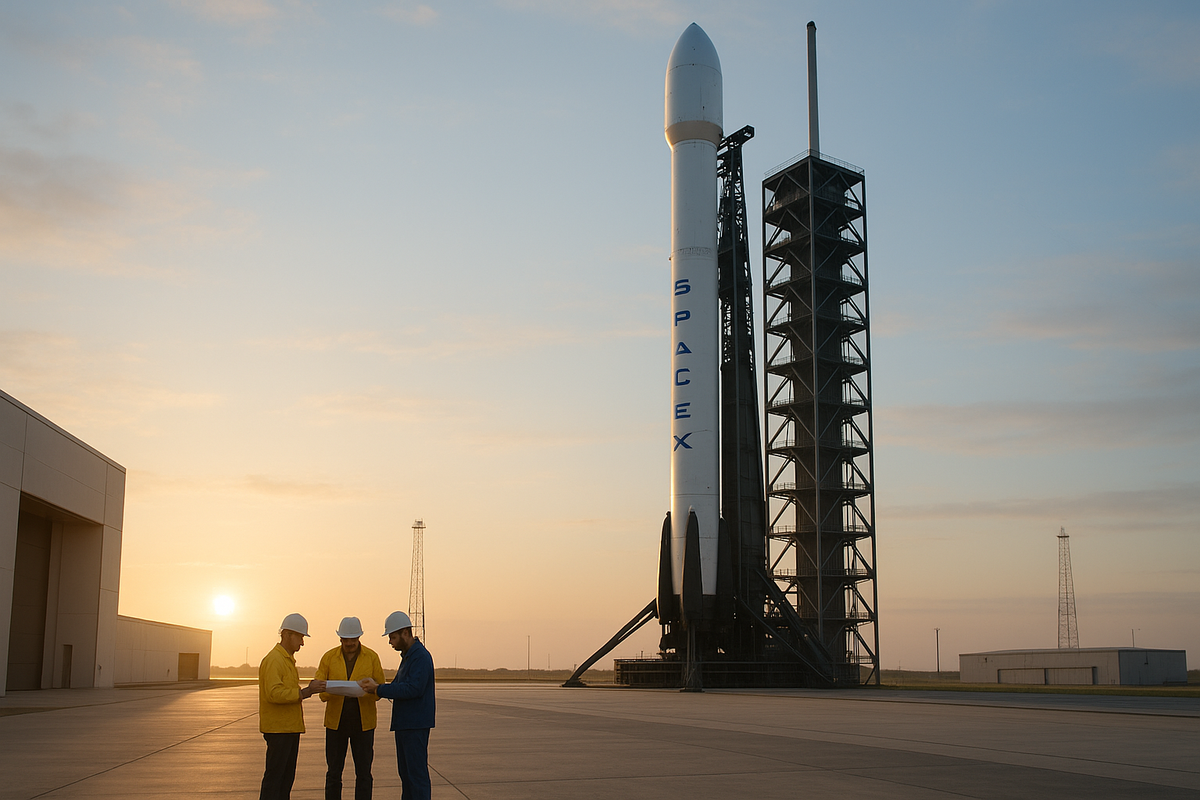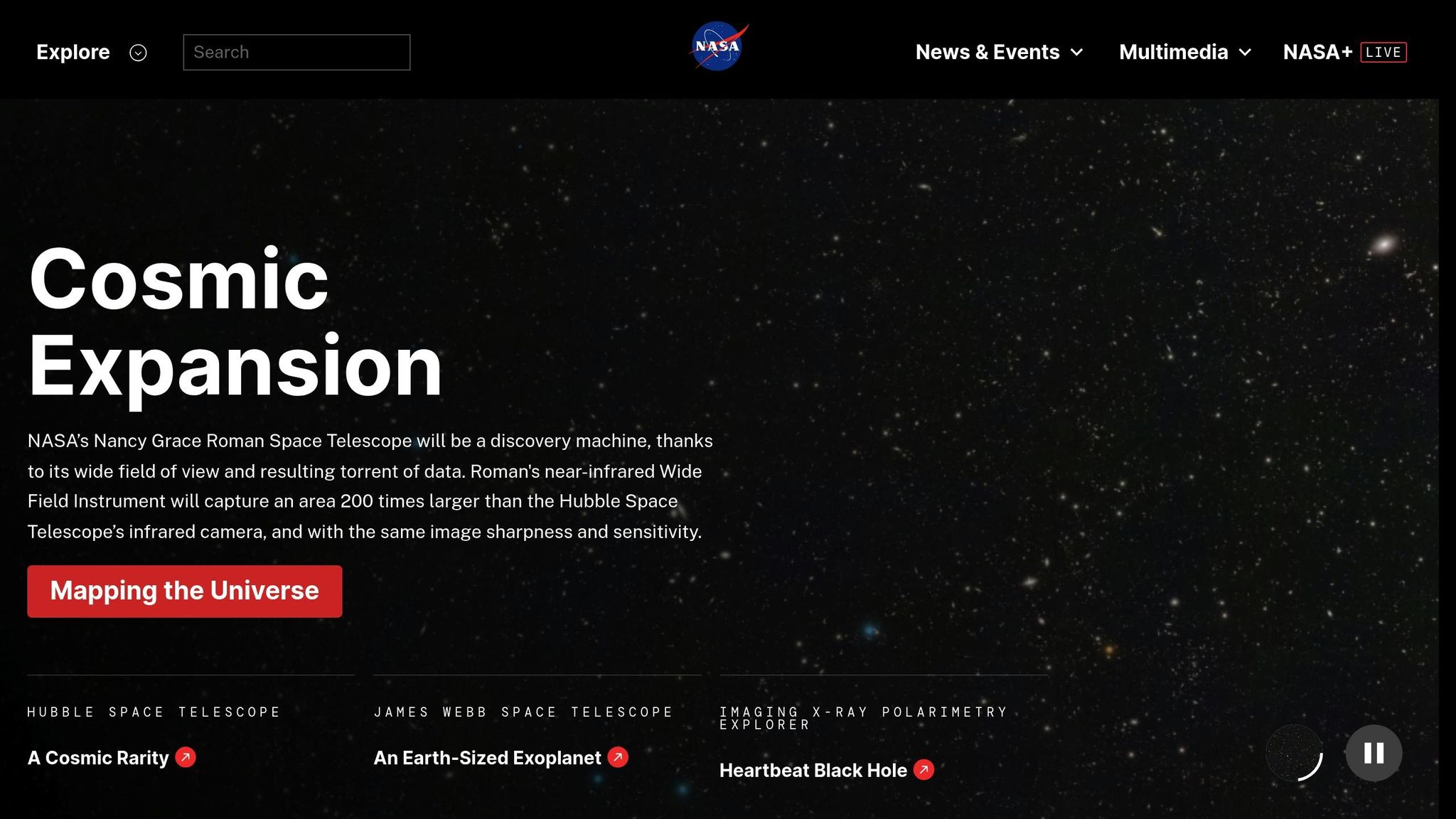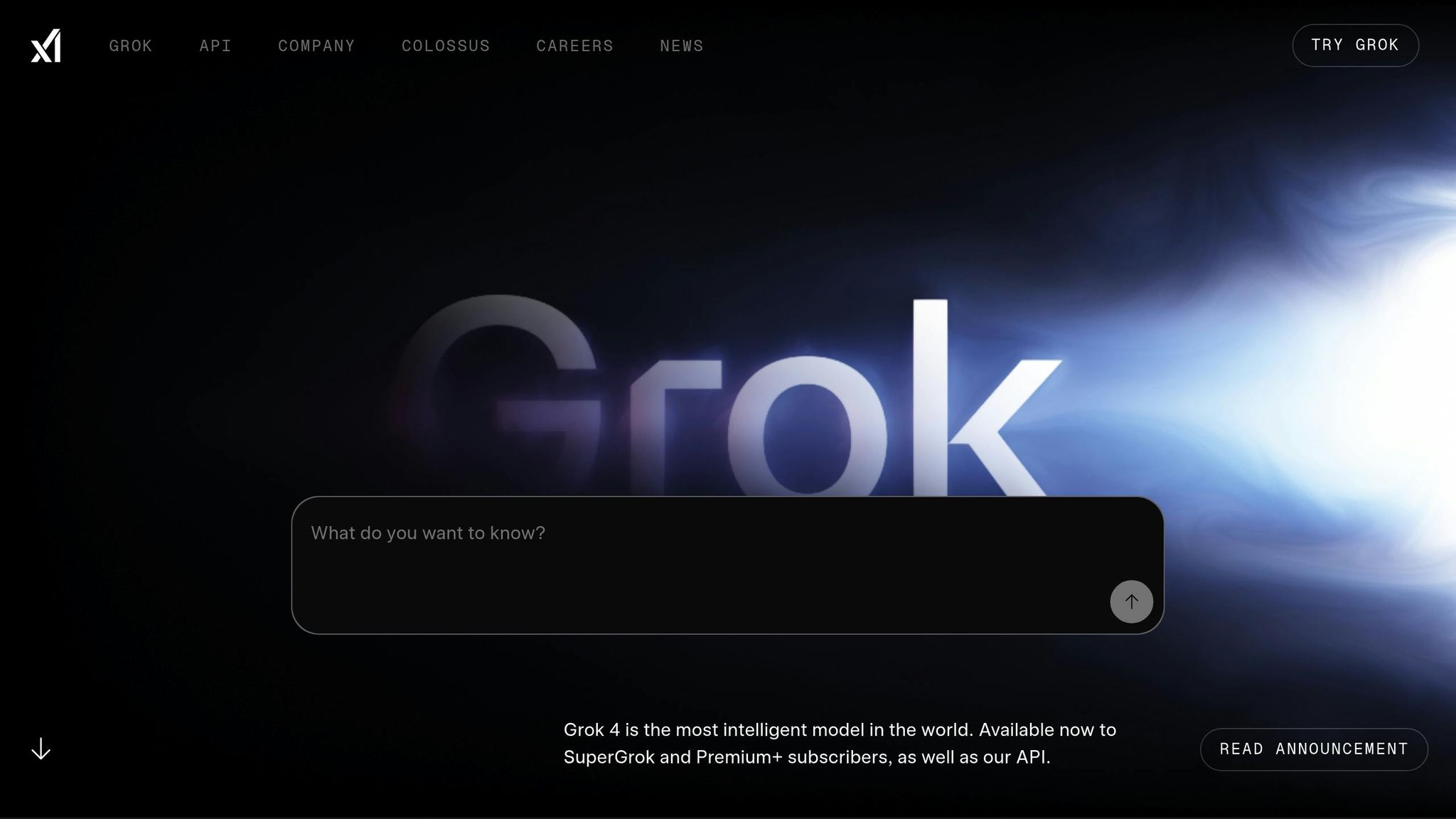How SpaceX Partnerships Drive Innovation
Exploring how strategic partnerships fuel innovation and growth in space exploration, driving advancements and reducing costs.

SpaceX thrives by teaming up with global corporations, government agencies, and tech firms. These partnerships help share costs, solve complex challenges, and speed up advancements in space exploration. Key benefits include:
- Lower Costs: Partnerships reduce financial risks and make ambitious projects feasible.
- Faster Progress: Collaborations accelerate research, development, and testing timelines.
- Expanded Reach: Working with government agencies like NASA and corporate giants like Amazon opens new markets and simplifies regulatory hurdles.
- Cutting-Edge Technology: AI tools from xAI improve rocket recovery, satellite management, and autonomous decision-making.
Whether it's reusable rockets, satellite internet, or Mars colonization, SpaceX’s partnerships are central to its success. These collaborations fuel its growth and solidify its leadership in the space industry.
How NASA and SpaceX Work Together

Major SpaceX Corporate and Strategic Partners
SpaceX has cultivated a wide array of partnerships with tech giants and government entities, each playing a critical role in advancing the company’s mission to revolutionize space exploration. Let’s take a closer look at how Amazon, U.S. government agencies, and xAI are contributing to SpaceX’s progress.
Amazon and Project Kuiper

Amazon’s ambitious Project Kuiper, aimed at deploying a massive satellite constellation to deliver global broadband, has selected SpaceX as its launch provider. This collaboration highlights SpaceX’s reputation for dependable and cost-effective launch services. By working together, both companies are pushing the boundaries of rapid launch turnarounds and efficient satellite deployments. This partnership showcases how specialized expertise can propel SpaceX’s efforts to new heights.
U.S. Government Agencies
SpaceX’s partnerships with U.S. government agencies are a cornerstone of its operations. Agencies like NASA and the Department of Defense entrust SpaceX with critical launch missions requiring unparalleled reliability and security. For example, NASA’s Artemis program relies on SpaceX to deliver cutting-edge technology for complex missions, including next-generation spacecraft and in-orbit refueling systems. These collaborations not only secure vital contracts but also drive advancements in engineering and quality control, aligning with SpaceX’s broader objectives.
xAI and Artificial Intelligence Integration

SpaceX’s partnership with xAI focuses on integrating artificial intelligence to enhance various aspects of its operations. From improving rocket recovery and autonomous droneship management to optimizing satellite constellations, xAI’s AI-driven tools play a pivotal role. Real-time analysis of telemetry data aids in mission planning and risk assessment, while advanced algorithms boost the efficiency of Starlink’s network. As SpaceX eyes deep space exploration, these AI capabilities become increasingly essential, enabling autonomous decision-making in challenging environments and cementing SpaceX’s position as a leader in innovation.
These strategic alliances go far beyond traditional launch services, offering investors a glimpse into the broader value SpaceX generates. For more insights, check out the SpaceX Stock Investment Guide.
How SpaceX Uses Partnerships to Drive Innovation
SpaceX has a knack for turning partnerships into powerful engines of progress. Instead of viewing collaborations as mere business deals, the company uses them as opportunities to push the limits of space exploration and technology. These partnerships are central to how SpaceX accelerates advancements and expands its capabilities.
Technology Co-Development and R&D Speed
By teaming up with key partners, SpaceX shares the costs and expertise needed for cutting-edge research and development. This collaborative approach not only reduces financial risk but also speeds up the innovation process.
Take NASA's Commercial Crew Program, for example. SpaceX worked hand-in-hand with NASA engineers to develop the Dragon spacecraft's life support systems and safety protocols. This partnership combined SpaceX's innovative manufacturing methods with NASA's deep experience in human spaceflight, enabling crew certification to happen more efficiently.
Another example is the Raptor engine, which benefits from partnerships with specialized suppliers. These suppliers contribute advanced materials and precision manufacturing techniques, allowing SpaceX to tap into the latest in metallurgy. This teamwork helps streamline development timelines and supports SpaceX's rapid growth in operations.
Scaling Launch Capacity and Infrastructure
Strategic collaborations also play a big role in helping SpaceX scale its operations without massive capital investments. This approach allows the company to meet increasing demand while keeping its launch services competitively priced.
For instance, during the rollout of the Starlink satellite network, SpaceX partnered with ground station operators worldwide. By working with local providers to build connectivity infrastructure, the company was able to expand global coverage quickly and with less operational complexity. Partnerships like these also help SpaceX navigate regulatory landscapes more efficiently, further smoothing the path for growth.
Managing Regulatory and Policy Challenges
Government partnerships are another area where SpaceX excels, using these relationships to navigate complex regulations and turn challenges into opportunities. These collaborations often lead to faster approvals and clearer regulatory pathways.
For example, working with the Department of Defense has given SpaceX valuable insights into national security requirements and regulatory expectations. Similarly, close collaboration with the FAA has helped streamline the development of new launch procedures and safety protocols, leading to quicker approvals for both routine missions and experimental technologies.
NASA’s long-standing partnership with SpaceX shows how regulatory collaboration can benefit the broader commercial space industry. By operating within established frameworks, SpaceX not only meets evolving safety and operational standards but also contributes to shaping oversight practices that make the industry more efficient for everyone involved.
How Partnerships Support SpaceX's Goals
SpaceX works closely with government programs, industry suppliers, and global telecom providers to push boundaries, lower expenses, and expand its influence. By focusing on affordability, connectivity, and speed, these collaborations help SpaceX move closer to its ambitious objectives.
Lowering Costs and Advancing Reusability
Through partnerships with government initiatives and material suppliers, SpaceX has made strides in reusable rocket technology. Sharing development costs and financial risks has allowed the company to refine booster recovery systems and maintain competitive launch prices. These efforts align with SpaceX's mission to make space travel more affordable and sustainable.
Extending Global Connectivity
By teaming up with local telecom providers and leveraging existing ground networks, SpaceX has significantly expanded Starlink's presence worldwide. These alliances not only speed up deployment but also help navigate regulatory hurdles, bringing high-speed internet to areas that have long been underserved.
Accelerating Innovation Timelines
Collaborating with specialized suppliers and tech companies has enabled faster prototyping, testing, and production of cutting-edge spacecraft and autonomous systems. Additionally, working with government agencies helps streamline regulatory approvals, ensuring that new technologies transition quickly from concept to reality. This rapid pace of development is key to SpaceX’s goal of making space more accessible.
These partnership-driven efforts fuel the advancements that SpaceX continues to showcase in its recent projects.
Case Studies: Partnership-Driven Innovations
SpaceX has a knack for turning partnerships into breakthroughs. By teaming up with various organizations, they refine their launch systems, adopt cutting-edge technologies, and meet the specific needs of both commercial and defense sectors. Let’s dive into a few standout examples of how collaboration fuels their progress.
Amazon Kuiper Satellite Launches
When Amazon embarked on its Kuiper project, SpaceX stepped in with customized solutions. They tailored their launch configurations and fine-tuned payload integration to ensure smooth operations. This collaboration not only streamlined satellite deployment but also made the process more efficient, showing how adapting systems to unique satellite constellations can simplify operations and stick to tight schedules.
xAI Synergies in AI and Robotics
SpaceX’s partnership with xAI has brought artificial intelligence into the heart of their operations. From launch to recovery, AI now plays a critical role in optimizing autonomous systems and refining mission planning. By tapping into xAI’s expertise, SpaceX has enhanced autonomous flight capabilities and developed real-time decision-making tools, making even the most complex missions more precise and reliable.
Defense Missions with U.S. Agencies
Working alongside U.S. defense agencies, SpaceX has developed secure communication protocols and agile launch strategies. These collaborations address the unique demands of defense missions, including classified payloads and time-sensitive launches. The result? Specialized procedures and heightened security measures that bolster national security while meeting stringent operational requirements.
These partnerships highlight how collaboration not only tackles immediate challenges but also positions SpaceX to thrive in the rapidly evolving space industry.
The Future of SpaceX Partnerships
SpaceX has become a cornerstone of a growing commercial space ecosystem, forging partnerships that are reshaping the way we think about space exploration. These collaborations are evolving rapidly, setting the stage for new trends and opportunities in the industry.
New Trends in Space Collaboration
The space industry is increasingly embracing partnerships that bridge diverse sectors, bringing together established aerospace giants, tech innovators, and ambitious startups. SpaceX plays a pivotal role in creating networks where partners can pool their resources and expertise. For example, shared launch platforms are becoming more common, allowing multiple satellite deployments in a single mission. This approach not only reduces costs but also improves efficiency.
Additionally, SpaceX is exploring ways to work with telecommunications providers to enhance global connectivity. As technology advances, artificial intelligence is expected to play a larger role in optimizing mission planning and enabling autonomous operations, further streamlining these collaborations.
These trends reflect SpaceX's broader goals, especially its ambitions for deep-space exploration.
Long-Term Vision for Space Exploration
Achieving a human presence on Mars will require extensive collaboration across public, private, and international sectors. SpaceX, known for its cost-effective and innovation-driven strategies, recognizes that partnerships will be critical to developing the necessary technologies. This includes creating reliable life support systems and designing habitats capable of sustaining life on another planet.
Starlink, SpaceX's satellite internet project, also highlights the importance of global partnerships. As the network expands, it has the potential to not only improve Earth-based communications but also serve as a foundation for future space-based communication systems.
For investors, these partnerships are more than just strategic - they are key drivers of SpaceX's growth and valuation. The SpaceX Stock Investment Guide offers a detailed look at how these alliances could shape the company's market position.
FAQs
How do SpaceX's partnerships with agencies like NASA and the Department of Defense improve its technology and mission reliability?
SpaceX's partnerships with NASA and the Department of Defense have been instrumental in shaping its technological advancements and ensuring mission success. Through its work with NASA, SpaceX taps into a wealth of knowledge, infrastructure, and decades of expertise in space exploration. For instance, their joint missions to the International Space Station (ISS) have allowed SpaceX to fine-tune its spacecraft designs and streamline operations.
On the other hand, collaborating with the Department of Defense enables SpaceX to handle critical satellite launches and enhance systems for managing space traffic. These joint efforts not only boost the reliability and security of their missions but also encourage progress in cutting-edge space technologies. Together, these collaborations help SpaceX redefine the possibilities in space exploration and commercial spaceflight.
How does SpaceX's partnership with xAI enhance its efficiency and mission planning using artificial intelligence?
SpaceX has teamed up with xAI to integrate cutting-edge artificial intelligence into its operations, aiming to make mission planning more efficient and streamlined. By processing massive amounts of mission data in real-time, AI plays a key role in refining decision-making, automating intricate processes, and improving accuracy in critical functions like autonomous flight, landings, and in-orbit activities.
This collaboration not only minimizes human error but also enhances safety and reliability, paving the way for SpaceX to push the boundaries of space exploration. AI-driven tools further enable quicker adjustments and smarter approaches, helping SpaceX maintain its leadership in the fast-changing world of space technology.
How do SpaceX partnerships with companies like Amazon help expand global satellite networks and improve projects like Starlink and Kuiper?
SpaceX teams up with companies such as Amazon to boost satellite deployment and broaden global internet access. A notable example is Amazon's Project Kuiper, which relies on SpaceX's Falcon 9 rockets to launch its satellites. This collaboration not only simplifies the deployment process but also helps cut costs for both organizations.
These alliances allow for quicker and more efficient satellite launches, fueling large-scale projects like Starlink and Kuiper. By joining forces, SpaceX and its partners are speeding up efforts to deliver reliable internet access to regions that have long been underserved.
Comments ()